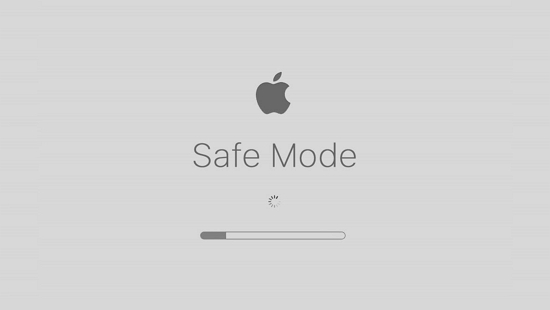How-To | What to Do When My Mac Won't Boot Past Apple Logo
When updating or installing macOS, there is a process of starting up your Mac from the startup disk. As the startup continues, you will see a white Apple logo with a progress bar. Usually, when the progress bar finishes, your Mac screen will turn black and then boot normally. But in some rare conditions, you might be stuck at the Apple logo screen forever. In this article, we will discuss what should you do when your iMac or any other Mac computer won't boot past Apple Logo. We have listed several valid methods for you, go ahead and try self-troubleshooting.
Method 1. Quick Solutions to Fix iMac Won't Boot Past Apple Logo
Step 1. Press and hold the iMac power button for at least 10 seconds to shut your Mac down. Restart your Mac and see if you can boot successfully.
Step 2. If Step 1 fails to solve your problem. Press and hold the power button to turn off your Mac again, unplug all accessories including printers, drives, USB hubs, and other nonessential devices from your Mac. Restart now to see if the problem is solved.
Method 2. Repair The Disk with Disk Utility
If quick solutions can't fix the problem, you can try macOS's built-in reparation feature - Disk Utility. This feature can find and repair errors related to the format and directory structure of Mac disks. Here are the detailed steps.
Step 1. Go to Applications > Utilities > Disk Utility.
Step 2. Select the startup disk and click First Aid.
Step 3. Wait until the repairing process is finished.
Step 4. Restart your iMac and see if it can boot properly.

Method 3. Enter Safe Mode to Fix iMac Won't Boot Past Apple Logo
Startup your Mac in Safe Mode can help you determine whether the problem you are experiencing is caused by the software loaded when your Mac starts up.
Step 1. Press and hold the power button to shut down the iMac.
Step 2. Press the power button to start your computer, press and hold the Shift key at the same time.
Step 3. Release the Shift key when you see the login screen. Enter Safe Mode follow the onscreen wizard.

Method 4. Reset NVRAM/PRAM
The last resort you can try is to reset NVRAM or PRAM. This is the method Apple Support will suggest you try when you contact for help. And it mainly works for solving the unexplained problems of your Mac. Follow the steps below to reset NVRAM/PRAM.
Step 1. Shut down your Mac, then turn it on and press and hold these four keys together: Option, Command, P, and R.

Step 2. Hold these keys for about 20 seconds, during which your Mac might appear to restart.
On Mac computers that play a startup sound, you can release the keys after the second startup sound.
On Mac computers that have the Apple T2 Security Chip, you can release the keys after the Apple logo appears and disappears for the second time.
Bonus Tip: What To Do When Mac Lost Data Unexpectedly
One common problem for users is their external hard drives suddenly failed to show up on Mac. And when they finally made it readable again, they sadly found that all the data on the external hard drive is gone. To save users who have been stuck in this dilemma, we recommend an efficient Mac data recovery tool - Qiling Data Recovery for Mac. Here are the reasons why we choose this software.
Key Features:
- Recover an unlimited amount of data from external devices (external HDD/SSD, SD cards, USB flash drives, etc.)
- Recover more than 1000 types of files, including photos, documents, emails, archives, etc.
- Create a bootable USB drive and recover data from it when the macOS is unable to boot up.
- Support recovering Time Machine backup and iTunes backup.
If you're interested in this tool, don't hesitate, download it from the button below to have a free trial.
Step 1. Launch Deep Data Recovery. Select file types and click "Next" to start.

Step 2. Select the disk location (it can be an internal HDD/SSD or a removable storage device) where you lost data and files. Click the "Scan" button.

Step 3. Deep Data Recovery for Mac will immediately scan your selected disk volume and display the scanning results on the left pane.

Step 4. In the scan results, select the file(s) and click the "Recover" button to have them back.
The Bottom Line
That's all about how to fix iMac won't boot past the Apple logo. All in all, there is no definite reason for this problem. The self-troubleshooting methods we have provided are worth trying. And they are 100% safe to apply. Even if you have encountered data loss, don't panic. Use Qiling Data Recovery for Mac immediately, it can scan and recover your lost data.
Related Articles
- Will Formatting My Mac Make It Faster | Here is Answer
- How to Recover Data on macOS High Sierra (10.13)
- How to Format USB Flash Drive to FAT32 on Mac without Data Loss
- Mac TextEdit Recovery: Recover Deleted/Unsaved TextEdit Files